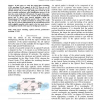Free Online Productivity Tools
i2Speak
i2Symbol
i2OCR
iTex2Img
iWeb2Print
iWeb2Shot
i2Type
iPdf2Split
iPdf2Merge
i2Bopomofo
i2Arabic
i2Style
i2Image
i2PDF
iLatex2Rtf
Sci2ools
INFOCOM
2002
IEEE
2002
IEEE
Impact of Segments Aggregation on TCP Reno Flows in Optical Burst Switching Networks
In this paper we study the Optical Burst Switching (OBS) paradigm for the support of the TCP flows in an All Optical Network (AON). We analyze the TCP send rate, i.e. the amount of data sent per time unit, taking into account of: i) the burst assembly mechanism, called burstification process; ii) the burst loss events inside the OBS network. The goals of the paper are to investigate the effect of the variation of the burstification period and to derive some general guidelines about the dimensioning of the burstification period. With respect to the case in which any assembly mechanism is missing, the results show that an accurate dimensioning of the burstification period yields negligible penalties with regard to the low speed sources and significant benefits with regard to the high speed sources.
Burst Assembly Mechanism | Burstification Period | Communications | INFOCOM 2002 | Optical Burst Switching |
| Added | 15 Jul 2010 |
| Updated | 15 Jul 2010 |
| Type | Conference |
| Year | 2002 |
| Where | INFOCOM |
| Authors | Andrea Detti, Marco Listanti |
Comments (0)

